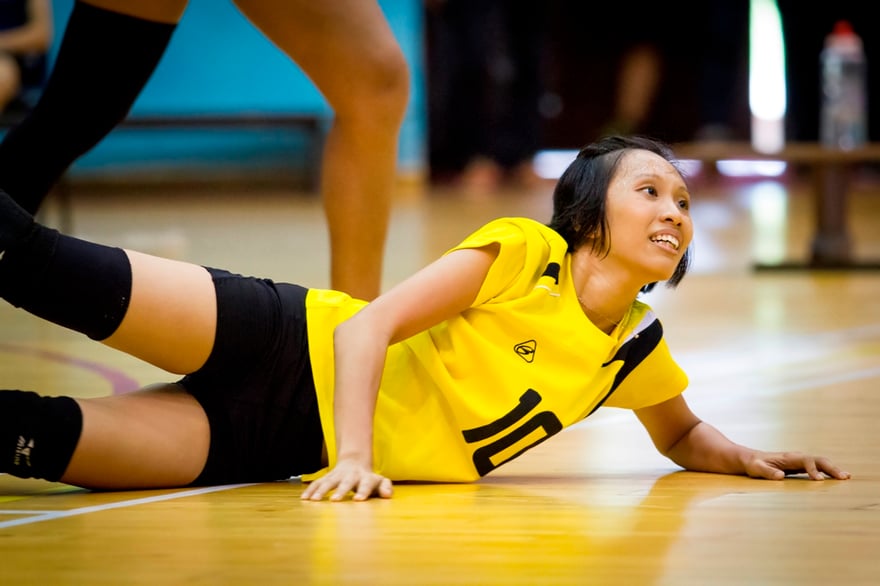Common Volleyball injuries

Image credit: Calvin Teoh/SportSG
Volleyball players are prone to shoulder injuries because the sport often involves repetitive overhead motions like spiking and blocking. Players are also susceptible to finger, knee, ankle and back sprains.
Rotator cuff muscles are used the most when players serve or spike. Over time, these muscles can become fatigued due to overuse. This is known as rotator cuff tendonitis / shoulder tendonitis. Some symptoms include:
- Shoulder clicking and/or pain when your arm is lifted to shoulder height.
- Pain when lying on the sore shoulder.
- Shoulder pain or clicking when you move your hand behind your back or head.
Resting, icing and physical therapy can alleviate the pain and help the injured tissues heal. If the pain persists, you should consult your physician and physiotherapist for further treatment.
Finger injuries can happen when blocking, setting or digging. Injuries like fractures, dislocations, as well as tendon and ligament tears can occur when the ball strikes the fingertip forcefully. If you are unable to bend your finger, then you should consult a physician or sports therapist. Treatment will vary depending on the injury.
Due to the large amount of jumping and quick direction changes, ankle injuries happen often in volleyball. These injuries can usually be treated with bracing and physical therapy. But if the injuries include subtle fractures or cartilage tears, then further evaluation like x-rays or MRIs might be required. For players with recurring ankle sprains, surgery is an option to consider.
Patellar tendonitis is the inflammation of the tendon that connects the kneecap to the tibia (shinbone). It is a common injury in volleyball due to the repetitive and forceful jumping during practice and matches.
Patellar tendon straps are often the first line of treatment because they are useful for alleviating the stress on the patella tendon. However, if patella tendonitis persists, surgery may be required. Physical therapy will also be helpful in aiding recovery.
Like ankle sprains, Anterior Cruciate Ligament (ACL) injuries occur when a player lands awkwardly after jumping. You will hear a ‘pop’ in your knee and there will be immediate swelling. Examinations by a physician and MRI are used to confirm the ACL injury.
Unfortunately, ACL tears do not heal and players who wish to return to sports are encouraged to have the ACL reconstructed through surgery. Recovery time after surgery is at least six to nine months.
Volleyball players often strain their lower back muscles or ligaments, so chronic lower back pain is a common injury. You can resolve the pain with rest and physical therapy. However, if the pain radiates down the legs to cause numbness or weakness in the ankle or foot, the player may be suffering from a herniated disc / slipped disc. A MRI scan can help evaluate the presence of a disc herniation. Players can return to play once the pain, numbness and weakness resolves.
To receive the latest updates on the happenings in the Singapore sports scene, or to find out more about some of the latest programmes on offer at ActiveSG, like our Facebook page here.





![ActiveSG Academies and Clubs Logo (Solid Colour)[8647]](https://www.activesgcircle.gov.sg/hs-fs/hubfs/ActiveSG%20Circle%202023Theme/images/ActiveSG%20Academies%20and%20Clubs%20Logo%20(Solid%20Colour)%5B8647%5D.png?width=150&height=65&name=ActiveSG%20Academies%20and%20Clubs%20Logo%20(Solid%20Colour)%5B8647%5D.png)




-01.png?width=200&height=141&name=Team%20Singapore%20Logo%20(Red)-01.png)



